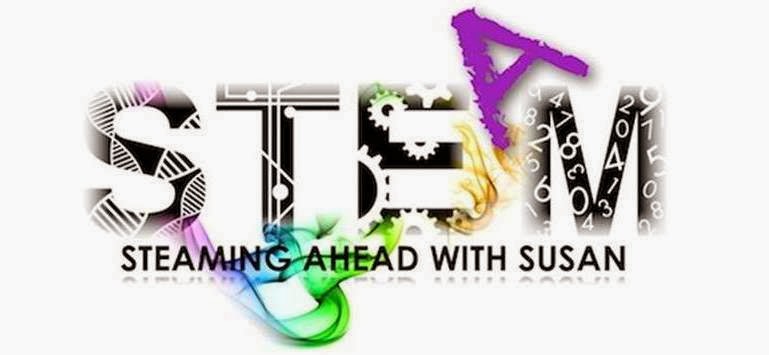 Shhhhhhh!!!!
Shhhhhhh!!!!That used to be the only sound you would hear in the library. People were spread out at tables, reading independently. Quietly.
That's not the story anymore.
If you step into a library now, chances are the shelves are only half full. That's not because librarians don't love books. Because, they do. It's because libraries are changing to meet the demands of their citizens. Many readers are looking for eBooks. Libraries can offer eBooks without taking up shelf space. So, what to do with that shelf space?
Maker Space!
Buzzzzzzzzz! Ding!!!!!!!! Whizzzzzzzzz! Whirrrrrrr! This is the sound you will hear from library Maker Spaces now.
MakerSpace, MakerLab, FabLab, TinkerLab, HackerSpaces, HackerLabs, TechShop, InventSpace. Perhaps you have heard one of these terms. Although they each specialize in something different, they are essentially the same.
"During the past year, makerspaces have been gaining traction in libraries. A makerspace is a place where people come together to design and build projects. Makerspaces typically provide access to materials, tools, and technologies to allow for hands-on exploration and participatory learning. They are occasionally referred to as fablabs, hackerspaces or tech shops. Makerspaces emerged around 2005 as an offshoot of the Do-It-Yourself (DIY) movement. A makerspace often includes a 3-D printer, digital media and fabrication software, tools for welding, woodworking, and soldering, traditional arts and crafts supplies, and other electronics. However, makerspaces are defined not by specific equipment but by a guiding purpose to provide people with a place to experiment, create, and learn.." ~ Fisher ES. Makerspaces move into academic libraries. ACRL TechConnect blog.
 |
| Mesa ThinkSpot |
Why all the interest in MakerSpaces?
Born with the DIY movement, today's youth don't want to consume technology, they want to produce it. They don't want to view videos, they want to make their own. Well, I take that back. They do watch videos, to learn from them. If they want to drywall their house, they don't necessarily hire a contractor. They watch a YouTube tutorial. If they want to make a new Lego creation, they might watch a few tutorials, experiment on their own, and then film their own tutorial on how to do a "better" Lego creation. And it isn't all fluff. If you watch the tutorials with a teacher's eye, you will see Bold Beginnings, transitions, Exciting Endings. They know who their audience is and they talk directly to them. These are skills we teachers have worked on for years in the classroom. One paragraph for your intro. Three paragraphs for your body.....Students are not merely satisfied with turning in a paper for the teacher's eyes only. They want to share with a global audience.
Let me share a story. A new version of Minecraft came out over the weekend. I was eager to tell my son, thinking he would want to play immediately to see what the new version could do. What did he do? The first words out of his mouth were, "Mom! Can I borrow your camera to make a tutorial of the new version?!" He hadn't even seen the new version yet! However, that is their first inclination. If you haven't been privy to Minecraft tutorials (or any tutorials for that matter), search for them on YouTube. It will blow you away. And some of them are under 8 years old!
The same goes for apps. Millennials don't want to play apps. They want to create them. This is precisely why creative spaces are so popular now.
Who is doing Library Maker Spaces?
This summer, I had the pleasure of presenting at the Hi-TEC conference in Chicago. However, even though I was hundreds of miles from the office, I still had a deadline and had to run to the public library for some books. Oh my stars!
This one library MakerSpace had 3D printers, a vinyl cutter, a computerized weaver,
a wood engraver, laptop stations, and a huge collaborative workspace.
 |
| Chicago Maker Lab |
Mesa ThinkSpot
The Mesa ThinkSpot, located at the Red Mountain Library, offers patrons access to a green screen, video editing equipment, Lego courses, coding, and more! Watch this video:
A quick peek at just their August calendar shows that they are
"creating innovation through community collaboration".
I could go on and on about libraries-turned-maker-spaces. But, it's more fun to discover on your own. Does your library have space devoted to collaboration, exploration, creation? Haven't been to your library in awhile? September is Library Card Sign-Up Month. I encourage you to take your students, children, grandchildren to the local library.
 |
| AtYourLibrary.org |
***The Maker Movement***
If you are interested in reading more about the Maker Movement, ISTE, the International Society of Technology in Education, has written a few articles on the subject. The Maker Movement, a Learning Revolution
A search in Google also produces many such articles.


















